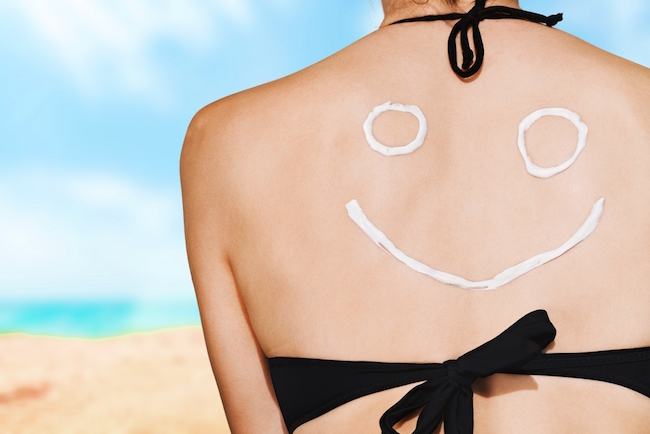How to Choose a Sunscreen That Protects You

You know you should wear sunscreen, but do you know what to look for in a sunscreen? If you answered "nope" to that question, you're not alone. Lots of people have trouble picking out a bottle of sunblock, a new study suggests.
Fewer than half of the 114 study participants could correctly identify how well a sunscreen protected against health problems such as sunburn, photoaging (premature aging of the skin caused by exposure to sunlight) and skin cancer just by looking at the product's label, according to the researchers at Northwestern University Feinberg School of Medicine in Chicago who conducted the study.
Only 49 percent of the participants surveyed knew what the letters "SPF" on a sunscreen bottle stood for. (It's an acronym for "sun protection factor.")
And it's not just the small sampling of people who participated in the study who have trouble deciphering sunscreen labels, said Dr. Jennifer Stein, an assistant professor of dermatology at New York University's Langone Medical Center who was not involved in the study. [5 Surprising Things About Sunscreen]
"At least half of the patients I see — especially this time of year — ask me questions about sunscreen," Stein told Live Science. "Very frequently, people are confused about the different kinds of protection they can get from sunscreen. And everybody wants to know what to look for."
One of the reasons people might have trouble deciphering sunscreen labels could be that, prior to 2012, these labels looked a bit different from how they appear now. In the past, sunscreen manufacturers were required to display only one bit of information — the SPF rating, which shows how well a product protects against ultraviolet B (UVB) rays. UVB rays are the kind that can ruin a day at the beach, causing sunburns and, by extension, skin cancer.
SPF ratings are pretty straightforward, said Dr. Roopal Kundu, an associate professor of dermatology at Northwestern, who supervised the study.
Sign up for the Live Science daily newsletter now
Get the world’s most fascinating discoveries delivered straight to your inbox.
"An SPF of 30 will filter about 97 percent of UVB rays. An SPF of 50 will filter about 98 percent of UVB rays," Kundu told Live Science.
Although most of the participants in Kundu's study didn't know what SPF stood for, or how the number was related to UVB rays, most did understand that sunscreens with higher SPF ratings offered more protection against sunburns and skin cancer than sunscreens with lower SPF ratings, Kundu said.
However, what's still confusing to people is that a high SPF rating doesn't mean a sunscreen will protect your skin against the ultraviolet A (UVA) rays that cause photoaging and can also lead to skin cancer. (Only 29 percent of study participants knew this.)
So, how can you find a sunscreen that protects you from all the rays that can damage your skin? Look for one labeled "broad spectrum," Kundu said. Under the U.S. Food and Drug Administration's current sunscreen labeling guidelines, only products that protect against both UVA and UVB rays can receive the "broad spectrum" label.
In addition to choosing a sunscreen that protects your skin from both kinds of damaging rays, there are a number of other steps you can take to reduce your risk of skin damage from the sun this summer, according to both Kundu and Stein:
- Reapply sunscreen every two hours, or after every dunk in the pool or ocean.
- Limit your exposure to the sun, especially during the middle of the day, when the sun's rays are strongest.
- If you have to be outside midday, find some shade, like an umbrella or a tree.
- Cover up with long sleeves, pants, a hat and sunglasses whenever possible.
If covering up completely seems too extreme, consider at least wearing a shirt to cover sunburn-prone areas like the chest and shoulders.
"It's been a long, cold winter, and people are really excited to be outside," Stein said. "There's no reason to be a vampire. You just have to do it in such a way that's a little safer."
The results of the sunscreen survey were published today (June 17) in the Journal of the American Medical Association Dermatology.
Follow Elizabeth Palermo @techEpalermo. Follow Live Science @livescience, Facebook & Google+. Original article on Live Science.

Elizabeth is a former Live Science associate editor and current director of audience development at the Chamber of Commerce. She graduated with a bachelor of arts degree from George Washington University. Elizabeth has traveled throughout the Americas, studying political systems and indigenous cultures and teaching English to students of all ages.









